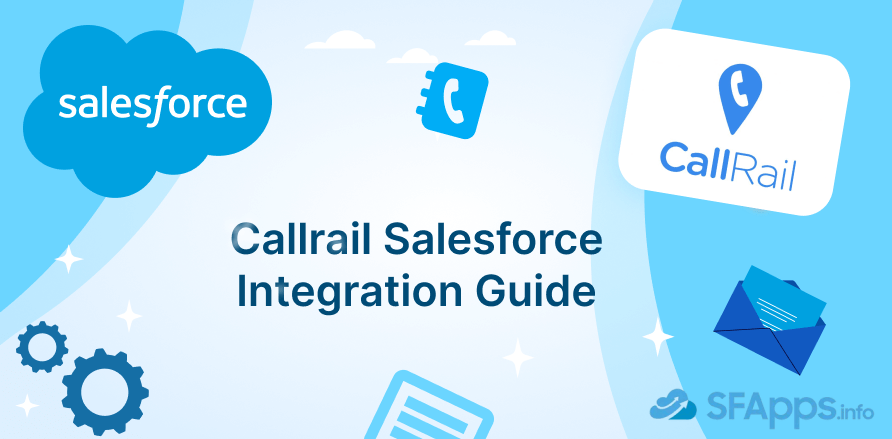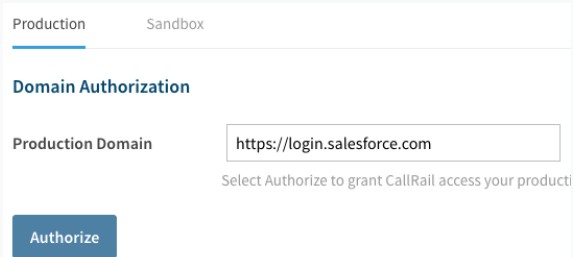CallRail Salesforce Integration Guide
 Dorian Sabitov
Dorian Sabitov
Why Should You Connect Callrail with Salesforce?
If your business relies on phone calls to attract customers or generate leads, connecting CallRail with Salesforce can significantly streamline your workflow. CallRail automatically tracks and logs call data into Salesforce, which means you won’t have to enter information manually. Manual data entry can be time-consuming and prone to errors, especially when dealing with a high volume of calls. CallRail helps ensure that every call, including caller information, call duration, and outcomes, is accurately recorded in Salesforce. This automation not only saves time but also helps your team stay focused on what matters—engaging with customers and closing deals—rather than worrying about administrative tasks. Additionally, with all the data in one place, it becomes easier to track the effectiveness of your marketing campaigns and gain insights into customer interactions. When you integrate it with Salesforce, you can see exactly how phone calls impact your leads and sales.
Additionally, implementing Salesforce Call Center integration is more than just connecting phone systems. Imagine answering a call and getting a recording along with a live transcript right away. It can also send follow-up tasks and emails automatically, making things easier.

So, the main benefits of CallRail and Salesforce integration are:
Less manual work: call data gets automatically logged in Salesforce.
Better lead tracking: you will know which calls result in leads or deals.
More time for sales: your sales team can spend less time on data entry and more time on selling.
CallRail’s Conversation Intelligence: creates transcripts, highlights keywords, and automatically qualifies leads so your team can focus on winning the sale.
Obstacles to Beware During Callrail Integration with Salesforce
How to Set up CallRail Salesforce Integration:
Sometimes integrations can be a bit tricky, but not in this case. Let me show you how to do it in just a few steps:
1. Ensure the ‘View All Profiles’ setting is enabled for the user that is authorizing the integration:

View All Profiles Setting on Salesforce. Source: CallRail Documentation
2. Sign Up for CallRail: first, we need to create an account, if you don’t have one. As an option, you can get a free trial.
3. Open CallRail Settings.
4. Find Salesforce Integration: in the ‘Integrations’ tab, search for Salesforce in the list of available apps. Choose where you want to build your integration: Production or Sandbox. Provide your Domain and then press the ‘Authorize’ button. Also, you will be asked to give CallRail access to your Salesforce data. Make sure you grant the required permissions.

Provide your Domain on CallRail. Source: CallRail Documentation
5. Set Logging Rules: after connecting, you can customize how you want calls to be logged in Salesforce. For example, I set up mine so that every new caller is automatically added as a lead in Salesforce. You can also log calls as activities under existing leads or accounts.
6. Sync the Data: when you’re done setting up the logging rules, click ‘Sync’. Now, every call that comes through CallRail will be logged in Salesforce automatically.
Setting a custom Salesforce Call Center dashboard can also help you analyze performance metrics, leading to improved decision-making and resource allocation in your call center operations.
What Information Gets Synced between CallRail and Salesforce?
When using the integration, a variety of data is shared between CallRail and Salesforce. Here’s what gets synced automatically:
Caller’s phone number.
Call duration (how long the call lasts).
Call recordings (if enabled).
Lead information associated with the call.
Call status (completed, missed, or voicemail).
Tips for Flawless CallRail and Salesforce Integration
After setting up CallRail and Salesforce, you can find a few ways to make the integration work even better. Here are the tips:
1. Call Routing
You can set up call routing so that specific types of calls go to the right salespeople. For example, calls from certain regions or campaigns can be directed to specific team members.
2. Add Call Tags
CallRail lets you add tags to calls, like “High Priority” or “Follow-Up Needed.” These tags also appear in Salesforce, making it easier to organize and prioritize leads.
3. Use Reports
You can use Salesforce’s reports to analyze call data from CallRail. This can help you see which marketing campaigns are bringing in the most calls and adjust your strategy.
4. Lead Assignment Rules
In Salesforce, you can set up lead assignment rules to automatically assign calls from high value leads to specific sales agents. This will help your team respond faster to important calls.
Insight:
CallRail’s Premium Conversation Intelligence uses AI to enhance your marketing efforts. It offers sentiment analysis to help identify coaching needs, provides attribution insights to track your marketing success, and delivers brief call summaries to highlight essential information. These features can help improve your team’s performance and boost customer engagement.
Obstacles to Beware During Callrail Integration with Salesforce
If you run into obstacles during the CallRail and Salesforce integration, you can reach out to CallRail support for assistance. Their team can help troubleshoot issues and guide you through the setup process.
Permission issues: can happen during the integration if the user doesn’t have proper access rights. To avoid problems, make sure that the user who is setting up the integration has permissions like “View All Profiles” and “Modify All Data” to ensure smooth data synchronization.
Data Mapping Conflicts: one more common obstacle is ensuring that the data fields in CallRail align correctly with your Salesforce objects. Mismatched data fields can lead to improper logging or incomplete data syncs.
Duplicate Records: if not handled well, the integration can create duplicate leads or activities in Salesforce. This happens when CallRail adds new records without checking if they already exist in Salesforce.
API Limitations: Salesforce has API usage limits, and high call volumes in CallRail can quickly reach those limits. This can cause delays in syncing data or interruptions in real-time updates if the limits are exceeded. Keeping track of API usage is important to avoid disruptions.
FAQs about Connecting Callrail to Salesforce
Which countries does CallRail support?
CallRail provides services in the United States, Canada, the United Kingdom, and Australia.
What if I exceed my usage?
If you use more than your plan allows, CallRail will keep tracking your leads for accurate reports. You’ll be charged extra based on your plan’s rates for additional usage. You can also upgrade your plan if your business needs to grow.
What happens if I exceed Salesforce API limits during high call volumes?
If you exceed API limits, you may experience delays in data syncing or disruptions in real-time updates. It’s essential to monitor your API usage to avoid these issues.
Can I customize how call data is logged in Salesforce?
Yes, you can set specific logging rules in CallRail, such as automatically creating leads for new callers or logging calls as activities under existing leads or accounts.
Can I track the effectiveness of my marketing campaigns using CallRail and Salesforce?
Yes, by using Salesforce reports, you can analyze call data from CallRail to determine which marketing campaigns generate the most calls and leads.
Conclusion
Integrating CallRail with Salesforce makes tracking calls much simpler and helps your sales team work more efficiently. Instead of spending time manually logging call details, everything gets automatically recorded in Salesforce. This automation means your team can focus more on the important tasks—like connecting with potential customers and closing deals—rather than getting bogged down in paperwork. It also makes it much easier to keep track of leads and follow up with the right people at the right time. Overall, this integration isn’t just about saving time; it’s about creating better customer experiences and making sure no opportunity slips through the cracks. It’s a valuable tool that helps your team be more productive and deliver better results.
The post CallRail Salesforce Integration Guide first appeared on Salesforce Apps.
Subscribe to my newsletter
Read articles from Dorian Sabitov directly inside your inbox. Subscribe to the newsletter, and don't miss out.
Written by

Dorian Sabitov
Dorian Sabitov
Hello, I'm Dorian, a 6x Certified Salesforce Administrator and Developer from Ukraine. My journey in the world of CRM systems has been driven by a deep passion for Salesforce and a commitment to continual professional growth. I currently contribute to SFApps.info, a dedicated platform for sharing insights and solutions related to Salesforce. Your support and visit to this blog would be greatly appreciated as it helps further our collective knowledge in this exciting field.